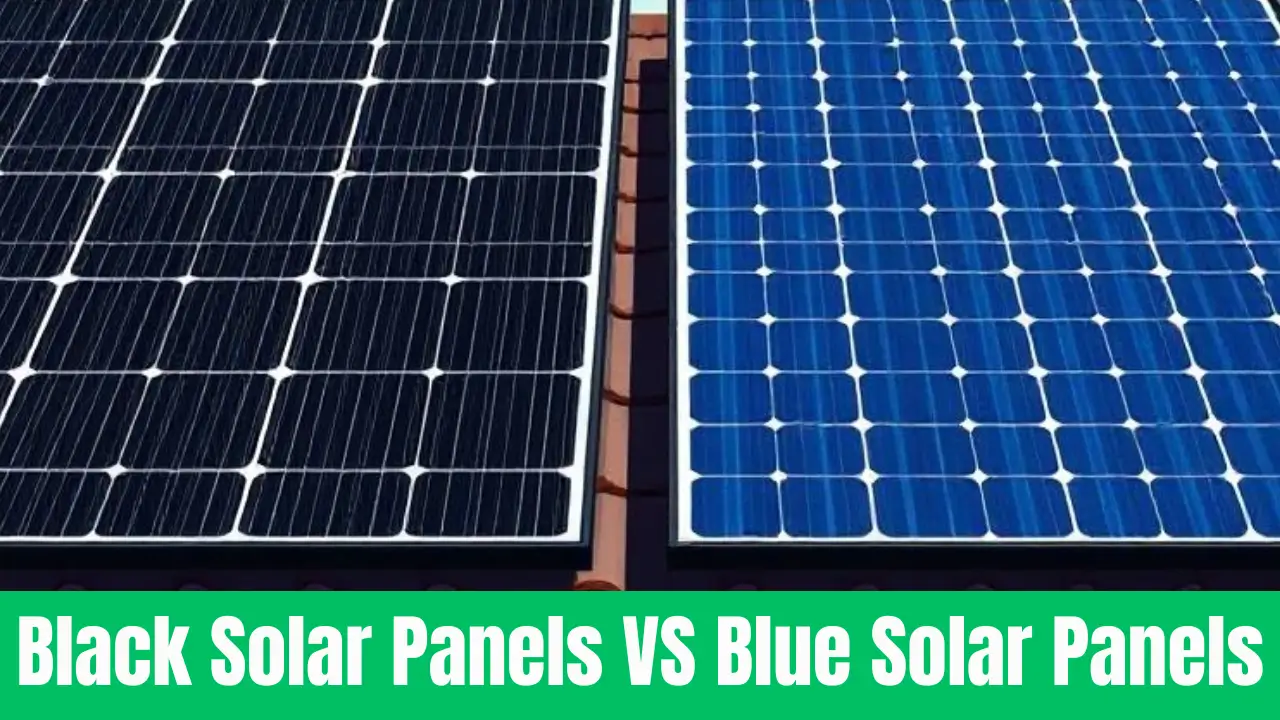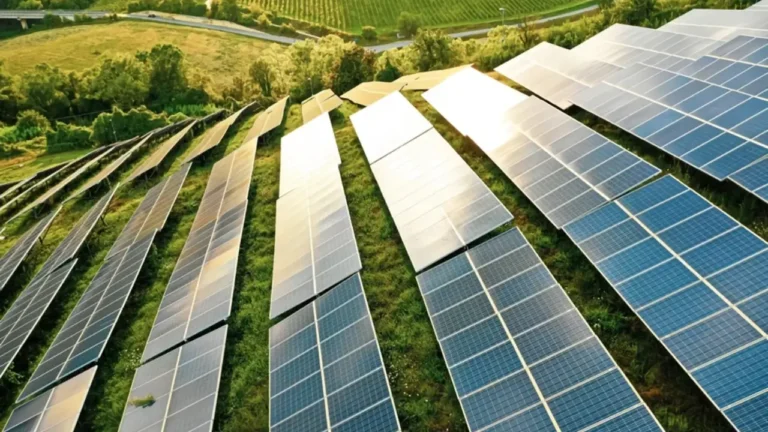Key Differences Between Black Solar Panels VS Blue Solar Panels
Black Solar Panels VS Blue Solar Panels
As solar energy becomes an increasingly popular choice for homeowners and businesses, one common question arises: What is the difference between black and blue solar panels? When you look at solar panels, you might notice they come in two primary colors black and blue.
While both serve the same purpose of converting sunlight into electricity, they differ in efficiency, aesthetics, performance, and cost. If you’re considering installing solar panels and are unsure whether to go for black or blue ones, this article will provide a detailed comparison of their benefits, features, types.
You Can Also Read: Canadian Solar Panel Price In Pakistan Today
Understanding Black and Blue Solar Panels
The difference in color comes from the type of silicon and the manufacturing process used to make the solar cells. Here’s a simple explanation:
- Black Solar Panels (Monocrystalline)
These panels are made from a single crystal of silicon, which allows electrons to move more freely, resulting in higher efficiency and better performance.
- Blue Solar Panels (Polycrystalline)
These panels are made from multiple silicon fragments melted together, which gives them a blue appearance and makes them cheaper to produce but slightly less efficient than black panels.
Benefits of Black Solar Panels (Monocrystalline)
- Higher Efficiency: Since they are made from a single crystal structure, they allow electrons to move more freely, leading to greater energy conversion.
- Better Aesthetics: The all-black sleek look blends well with most modern rooftops, making them an attractive choice for homeowners.
- Works Well in Low Light: These panels perform better in cloudy weather or during mornings and evenings when sunlight is not at its peak.
- Longer Lifespan: Monocrystalline panels last up to 30 years, providing long-term benefits.
- Less Space Required: Due to their higher efficiency, you need fewer panels to generate the same amount of energy as blue panels.
You Can Also Read: Green Meter to AMI Meter in Pakistan
Benefits of Blue Solar Panels (Polycrystalline)
- More Affordable: The manufacturing process is simpler, making blue solar panels cheaper than black ones.
- Environmentally Friendly Production: Producing polycrystalline panels generates less waste than monocrystalline panels.
- Good Performance for General Use: While slightly less efficient, they still provide a reliable and cost-effective solar solution for many households and businesses.
- Wide Availability: Blue panels are the most commonly available solar panels in the market, making them easier to find and install.
Types of Black and Blue Solar Panels
- Monocrystalline Solar Panels (Black Panels)
- Made from a single crystal of silicon
- Have a smooth and uniform appearance
- Best for efficiency and long-term investment
- Polycrystalline Solar Panels (Blue Panels)
- Made from multiple silicon crystals melted together
- Have a shiny and fragmented look
- Cheaper but requires more space
- Thin-Film Solar Panels (Alternative Option)
- Neither black nor blue but available in various colors
- Lightweight and flexible but less efficient
- Best for large-scale projects with space availability
Which One Should You Choose?
The best choice depends on your budget, space availability, and energy needs:
- If you want a budget-friendly option: Go for Blue Solar Panels (Polycrystalline).
- If you need maximum efficiency in limited space: Choose Black Solar Panels (Monocrystalline).
- If you want the best aesthetics for your home: Black solar panels will look better on rooftops.
- If you live in an area with high temperatures: Black panels perform better under heat.
- If your location has frequent cloudy weather: Black panels generate more power in low-light conditions.
Conclusion
Both black (monocrystalline) and blue (polycrystalline) solar panels are great choices for solar energy. However, black panels offer higher efficiency and a sleek appearance, while blue panels are more affordable and widely available. If budget is your concern, blue panels are a great option.
If long-term performance and aesthetics matter more, black panels are the better investment. Ultimately, the right choice depends on your energy needs, space, and financial considerations.
FAQs
- Why are monocrystalline panels black while polycrystalline panels are blue?
The color difference comes from the silicon structure and manufacturing process. Monocrystalline panels absorb more light, making them appear black, while polycrystalline panels reflect more light, giving them a blue shade.
- Which type of solar panel lasts longer?
Black solar panels (monocrystalline) typically last 25-30 years, whereas blue panels (polycrystalline) last 20-25 years.
- Are black solar panels more efficient than blue ones?
Yes, black panels have a higher efficiency rate (18%-22%), while blue panels range between 15%-18%.
- Which solar panel type is best for small rooftops?
Black solar panels (monocrystalline) are best for small rooftops because they produce more energy per square meter.
- Why are blue solar panels cheaper?
Blue solar panels are cheaper because they use multiple silicon fragments, making the production process less expensive.
- Do black solar panels perform better in hot climates?
Yes, black panels are more heat-resistant and maintain higher efficiency in high temperatures compared to blue panels.
- Which solar panel type is better for cloudy weather?
Black solar panels (monocrystalline) perform better in low-light and cloudy conditions than blue panels.






